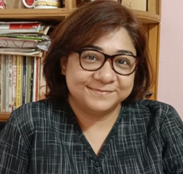Abstract
The primary discussion of the paper is centered on two polar question particles in the Eastern Indo-Aryan language Bangla. One is ‘ki’ and the other one is ‘naki.’ These two polar question particles also appear as interrogative disjunction morphemes in alternative questions. This further leads to the argument that there exists a disjunction operator in both polar and alternative questions and the polar question particle is the lexical realization of that disjunction operator.
Keywords
Polar questions, Alternative questions, Cornering effect, ki, naki, na,References
- Amritavalli, Raghavachari. (2003). Question and Negative Polarity in the Disjunction Phrase. Syntax vol.6, no. 1: 1–18. https://doi.org/10.1111/1467-9612.00054
- Baker, C. L. (1970). Notes on the Description of English Questions: the Role of an Abstract Question Morpheme. Foundations of Language vol.6:197– 219.
- Bartels, Christine. (1997). “Towards a compositional interpretation of English statement and question intonation.” PhD thesis, University of Massachusetts, Amherst.
- Beaver, David I., and Brady Z. Clark. (2008). “Sense and Sensitivity: How Focus Determines Meaning”. Oxford: Wiley-Blackwell.
- Biezma, Maria. (2009) Alternative vs Polar Questions: the Cornering Effect. Semantics and Linguistic Theory 19: 37. https://doi.org/10.3765/salt.v0i0.2519
- Biezma, María, and Kyle Rawlins. (2012). Responding to Alternative and Polar Questions. Linguistics and Philosophy 35, no. 5: 361–406. https://doi.org/10.1007/s10988-012-9123-z
- Biezma, Maria and Kyle Rawlins (2015). Alternative Questions. Language and Linguistics Compass 9(11), 450–468. https://doi.org/10.1111/lnc3.12161
- Beizma, Maria, Miriam Butt, and Farhat Jabeen. (2018). Polar Questions vs. kya: Questions in Hindi/Urdu. GLOW 41.
- Bhadra, Diti. (2017). “Evidentiality and Questions: Bangla at the interfaces.” PhD dissertation, Rutgers University.
- Bhatt, Rajesh, and Veneeta Dayal. (2014). Polar-kyaa: Y/N or Speech Act Operator? Presented at the Workshop on Non-Canonical Questions and Interface Issues, Hegne.
- Bhatt, Rajesh, and Veneeta Dayal. (2020). Polar Question Particles: Hindi-Urdu Kya:. Natural Language & Linguistic Theory. 38, 1115–1144. https://doi.org/10.1007/s11049-020-09464-0
- Bolinger, Dwight. (1978). Yes-No Questions are not Alternative Questions. In Questions, ed. H. Hiz, (1978):87 –105. Dordrecht, Holland: Reidel Publishing Company.
- Buring, Daniel. (2003). On D-Trees, Beans, and B-Accents. Linguistics & Philosophy 26:511–545. https://doi.org/10.1023/A:1025887707652
- Dasgupta, Prabal. (1980). “Questions and relative and complement clauses in a Bangla grammar.” PhD thesis, New York University Doctoral dissertation.
- Guha, Ambalika. (2022). Ki – the Interrogative Disjunction Morpheme in Bangla. In the conference proceedings of Formal Approaches to South Asian Languages 11.
- Howell, Anna. (2016). A Hamblin Semantics for Alternative Questions in Yoruba. Proceedings of Sinn und Bedeutung 20, 359–376
- Jayaseelan, K. A. (2008). Question particles and disjunction. Linguistic Analysis, 38(1): 208-221.
- Rajkhowa, Sushanta. (2018). On the Disjunction Particle ne in Assamese. Presented in 40th International Conference of the Linguistic Society of India.
- Roberts, Craige. (1996). Information Structure in Discourse: Towards an Integrated Formal Theory of Pragmatics. Journal of Heuristics 49(6) 91–136. https://doi.org/10.3765/sp.5.6
- Syed, Saurov, and Bhamati Dash. (2017). “A unified account of the yes/no particle in Hindi, Bangla and Odia.” In Generative Linguistics in the Old World (GLOW) in Asia 11, volume 1, ed. Michael Yoshitaka Erlewine, Vol. 84. Cambridge: MITWPL:201-212.


 Articles
Articles





